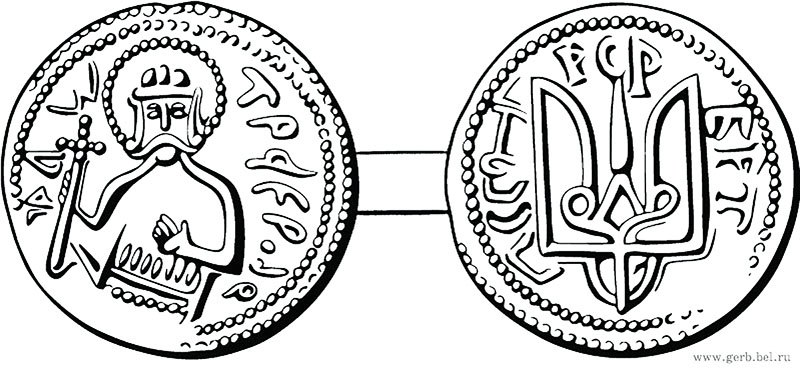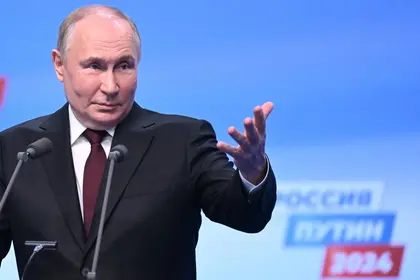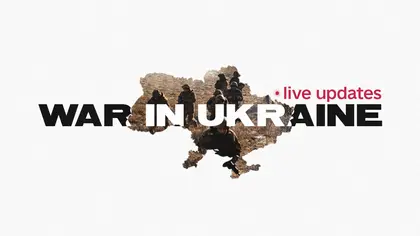But the history of these symbols goes a good deal further back than that – to the very beginnings of the first cultures known to have settled the lands that are today part of modern Ukraine.
“For everybody who knew the history of Ukraine, it was clear that they should be a blue-yellow flag and a trident,” Leonid Kravchuk, Ukraine’s first president, told the Kyiv Post in an interview. “It was not easy to have these symbols approved by the Verkhovna Rada (Ukraine’s parliament). But I think that the trident and blue-and-yellow flag will stay with us forever.”
Flag’s origin
A golden lion on a blue background appeared on the emblem and flag of the Kingdom of Galicia–Volhynia, a medieval state located largely on the territory of western Ukraine, during the 12th to 14th centuries.
Later on, the colors blue and yellow became connected with the national liberation movement in Halychyna, the region in western Ukraine that was part of Austro-Hungarian Empire from 1772 to 1918.
On May 2, 1848, the General Ukrainian Rada, the first representative body of Ukrainians in the Austro-Hungarian Empire, approved the blue-and-yellow flag and the emblem of a golden lion on a blue background as symbols of Ukrainians residing in Halychyna.
At the beginning of the 20th century, the blue and yellow symbolism spread to territory that was then part of the Russian empire. “Although the Ukrainian national movements in the Russian empire were weak and harshly suppressed, there is evidence that, after the failed revolution in 1905, the blue-and-yellow flag was used by Ukrainians living in Kyiv and Poltava,” says heraldic specialist Andriy Hrechylo.
From 1917 to 1921, the blue-and-yellow flag was the state flag of the then independent Ukrainian state.
“Prior to 1918, both flag versions of the blue-and-yellow flag – one with the blue on top, and the other with the yellow on top – were used in Ukraine. But in January 1918, Ukraine’s parliament approved the blue-and-yellow version of the flag and no further discussion on the sequence of the colors arose,” says Ivan Hrechylo, one of the designers of the modern Ukrainian national emblem.
It was only after the break-up of the Soviet Union that the Ukrainian blue-and-yellow flag came back into use again as the state flag. Ukraine’s parliament approved the blue-yellow flag as the national symbol of Ukraine on Jan. 28, 1992, almost six months after Ukraine declared independence.
One of the most popular interpretations of the colors of the Ukrainian flags is that the blue color represents the sky, while the yellow represents a wheat field.

A silver coin from the medieval Kyivan Rus era of Prince Volodymyr shows a trident symbol. (Courtesy)
Trident’s origin
The trident is a very ancient sacred symbol, and was commonly used in ancient times in India, Mesopotamia and Europe. The three-pronged spear is the symbol of Poseidon, the ancient Greek god of the sea. But it is also known as the weapon of Shiva – one of the three main deities in Hinduism.
Officially approved as Ukraine’s national emblem in early 1990s, the trident has been closely connected with Ukrainian history for centuries.
The first trident symbols found by archeologists on the territory of modern Ukraine were used by the Trypillian Neolithic culture in the period from 5,000 to 3,000 years B.C.
In the 10th century, Prince Volodymyr the Great of the Kyiv Rus minted a trident symbol on gold and silver coins, as well as on bricks and adornments. “It was not a heraldic sign back then but it was definitely an emblematic sign that was associated with the prince’s family,” says Hrechylo.
The most popular version says the three-pronged spear might symbolize the three-dimensional world, while other theories claim it is a symbol of a falcon, which was later interpreted as a symbol of the Christian Trinity of the God the Father, the Son and the Holy Spirit.
The modern emblem directly appeals to the historical heredity of Ukraine and the state of Kyivan Rus, says Hrechylo.
The Verkhovna Rada officially approved the trident as a national emblem of Ukraine on Feb. 19, 1992.

A worker installs the Ukrainian trident on the spire of the Verkhovna Rada in Kyiv on Oct. 29. (UNIAN)
Symbols need respect
Although the two symbols have widespread acceptance today, their adoption by parliament proved difficult.
Communist lawmakers were still in the majority in Ukraine’s parliament in the early 1990s, and they were reluctant to accept the nationalists’ blue-and-yellow flag and a trident as state symbols. Kravchuk as president threatened to dismiss the parliament during the political battles over the adoption of the trident, but in the end 231 lawmakers in the 450-seat parliament voted in favor.
“All of my tasks, first as speaker of the Verkhovna Rada, then as a president of Ukraine, consisted of trying to find compromises and persuading people (to approve the national emblem). It wasn’t easy, but it looks like I succeeded,” Kravchuk says.
“National symbols need to be respected. Unfortunately, nowadays we see that some regions and some political parties do not show much respect for the Ukrainian flag and trident, but I believe that this is temporary. I believe that new generations will respect our symbols.”
You can also highlight the text and press Ctrl + Enter







Comments (0)